Pros and cons
Self-leveling floors have a number of features. By pouring such a floor in the bathroom, you get an excellent result with many advantages:
- Lack of joints... Connections tiles, which is most often chosen for decoration, create a real problem: if you do not notice the depressurization of the seams in time, water will get under the tile and it will begin to "coop". No joints - no problem.
- Water tightness... Self-leveling floors do not allow moisture and water to pass through - the only weak points are the abutments to the wall, which in the bathroom it is enough to cover with waterproofing to achieve 100% protection against flooding of the neighbors from below.
- High strength... The surface is resistant to abrasion, mechanical stress. Self-leveling floors are often used in commercial premises, so in an ordinary apartment they will definitely serve for more than a dozen years.
- Ease of care... Again, due to the absence of seams and the smooth finish, wet cleaning is a pleasure. The use of aggressive chemicals is also not prohibited.
- Large selection of colors and designs... From monochromatic coatings to 3D images of nature and animals.
disadvantages self-leveling floors in the bathroom:
- High cost... Buying the mixture itself and paying for the work of professionals will cost a pretty penny. You can try to install the self-leveling floor in the bathroom with your own hands, but you will have to answer for the quality of workmanship and the beauty of the decorative coating yourself.
- High requirements for the base... The self-leveling floor is a decorative topcoat, several millimeters thick. To make it even, there must be a high-quality smooth screed from below.
- Difficulty of removal... During the next renovation, it will be difficult and expensive to dismantle the bathroom floor.
Which type is better to choose?
Initially, solutions are divided into cement and polymer: the former are considered rough (screed), the latter are decorative.
In the photo there is a monochromatic glossy coating in the bathroom
Polymeric self-leveling floors in the bathroom, in turn, are divided into subspecies:
Epoxy
The transparent resin has self-leveling properties, looks aesthetically pleasing, and allows you to create 3D floors with various three-dimensional patterns.
The disadvantages include fragility - due to the peculiarities of the material, it can crack upon impact and the coating will be hopelessly damaged. In addition, the surface is easily scratched and after a few weeks of use can turn from glossy to matte.
Polyurethane
A more durable and reliable version of the self-leveling floor, provided that a highly filled fill (layer up to 2 cm) is used. But the choice of design is much less than in the first case: basically, the surfaces are made monochromatic.
Manufacturers recommend polyurethane for use in rooms with high stress. Even if cracks form underneath, the floor will retain its original appearance, thanks to its elasticity and ability to stretch.
Important! The liquid composition dries for a long time, so even a beginner can handle styling.
Methyl acrylate
Unlike the first two varieties, this self-leveling floor dries extremely quickly: maximum strength is achieved within two hours after pouring. Based on this feature, the installation must be entrusted to professionals: there is no room for error in working with methyl acrylate.
The rest of the characteristics coincide with polyurethane - the floor will be strong, reliable, durable.
Important! During pouring and until it dries completely, the composition emits a pungent odor, therefore, forced ventilation is needed for comfortable work.
The photo shows the finished methyl acrylate surface
How is the installation going?
The installation of the self-leveling floor in the bathroom takes place in 5 stages:
- Dismantling the old coating.
- Waterproofing.
- Underfloor heating system laying (can be skipped).
- Level screed.
- Filling the decorative layer.
We will talk in more detail about the preparation and technology of pouring further.
Tools and materials
To install a self-leveling floor, you will need:
- drill or hammer drill with mixer attachment;
- a bucket or other container for mixing ingredients;
- float level or rule;
- needle roller;
- putty knife.
The amount of mixture for pouring is purchased based on the size of the bathroom and the thickness of the layer in mm - usually the consumption is indicated on the package. Do not forget to add ~ 10% stock to the required volume.
Step-by-step instruction
Getting started: first of all - dismantling... Old tiles or crumbling screed must be removed, preferably to reach the concrete base.
The next required step is waterproofing... Spread the mastic or aqueous dispersion with a brush or roller over the entire surface, going up the walls to a height of 7-10 cm. In order to save money, only the joint with the walls around the perimeter is insulated, applying the mixture 10 cm on each side.
When the waterproofing compound is dry, go to installation of underfloor heating... It should be laid according to the instructions. This step can be skipped if the apartment is warm and the self-leveling floor in the bathroom does not need additional heat supply.
The most difficult stage is screed... It must be done with high quality so that the coating turns out to be even, smooth, suitable for further gulf. If you doubt your abilities, it is better to entrust this work to professional craftsmen.
The filling of the decorative composition is started only after the cement has completely dried. To check, glue the tape and leave it for a few hours: if no condensation has formed from the inside, the base is completely dry.
Further, the surface is sanded, cleaned of dust, primed (the latter will reduce the consumption of the bulk mixture).
Important! Before finishing work, set the room temperature to 15-25C, check that the air humidity does not exceed 80%.
The most interesting stage begins: decorative... Pour the required amount of dry mixture into water, stir with a dry mixer until smooth.
Filling is done in stripes: start from the far corner, gradually moving towards the exit. After applying the strip, the layer thickness is leveled with a spatula or a rule. Passing the needle roller will help remove air bubbles.
When the entire surface is poured, once again go over the floor with a needle roller and leave to dry completely (see the instructions for the exact time).
Important! As with wallpapering, windows and doors must be closed - do not allow drafts until completely solidified.
Video
To better understand the technology, watch the detailed video:
Design options in the bathroom interior
Many apartment and house owners do not even consider a filling solution for their bathrooms. Some imagine that it will look like in a store or in a warehouse, others are frightened by the pictures with the depths of the sea in the design of the bathroom.
However, technology provides many more design options: by ditching flowers and dolphins, you may find that there are beautiful geometric or abstract patterns. Or abandon the drawings altogether, making the coating monochromatic and colored.
The photo shows an example of a black self-leveling floor in the bathroom
Compare all the pros and cons, calculate the cost per square meter of material and work - only after that make the final choice in favor of one or another floor covering.

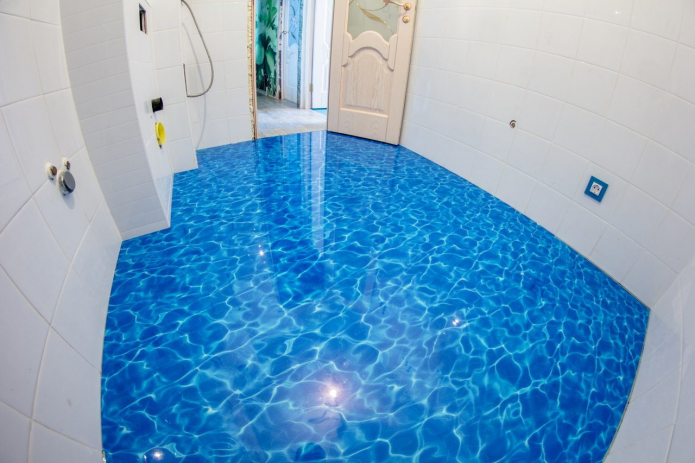
 10 practical tips for arranging a small kitchen in the country
10 practical tips for arranging a small kitchen in the country
 12 simple ideas for a small garden that will make it visually spacious
12 simple ideas for a small garden that will make it visually spacious


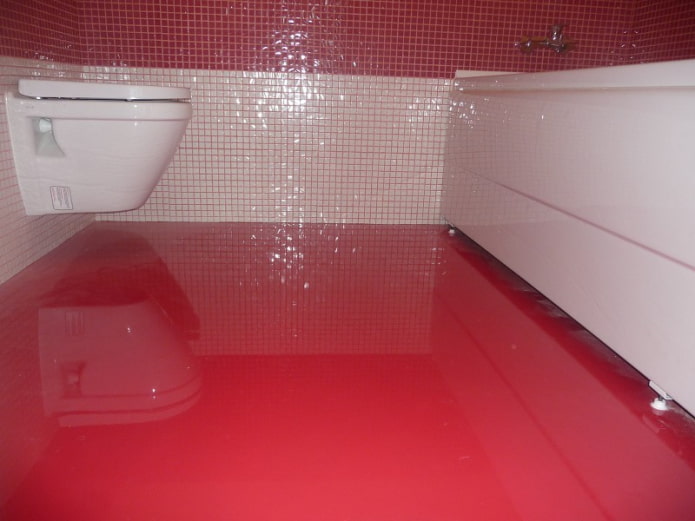
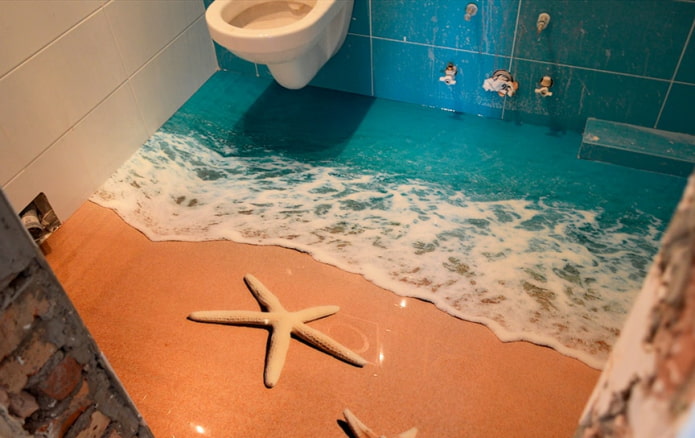
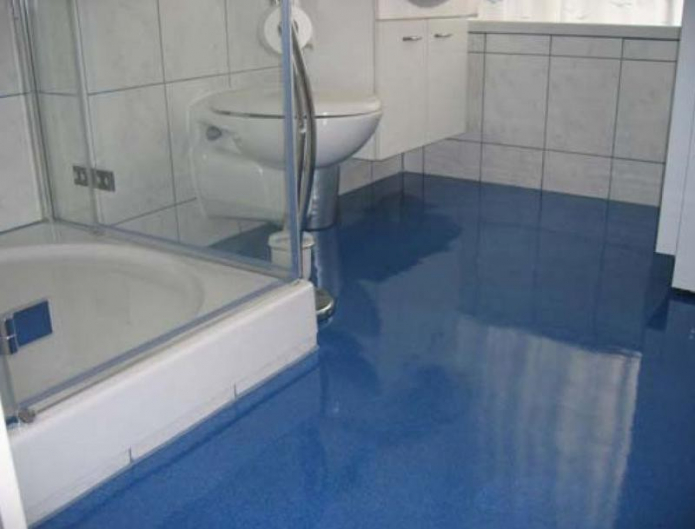

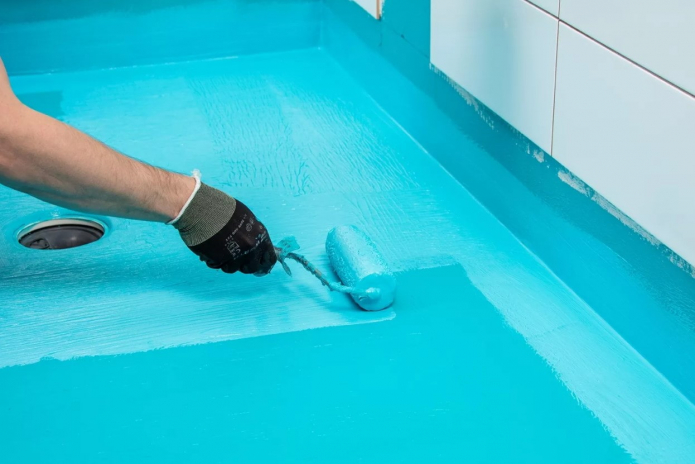
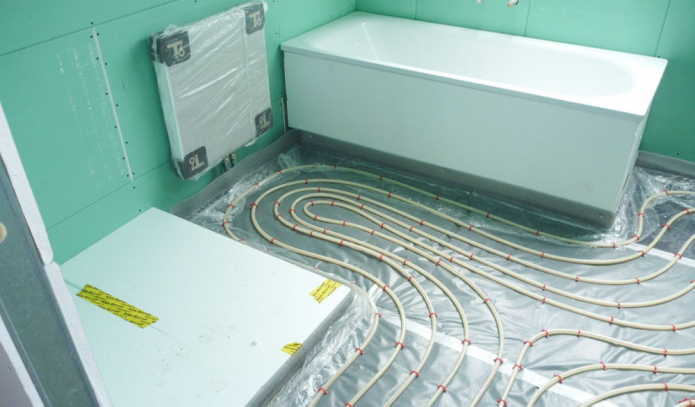
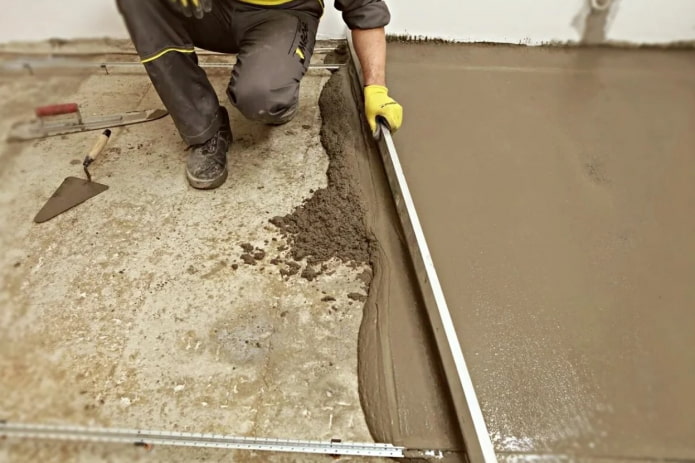
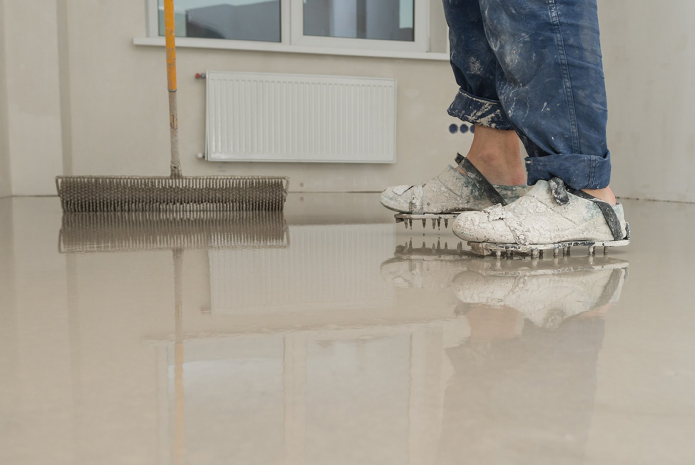
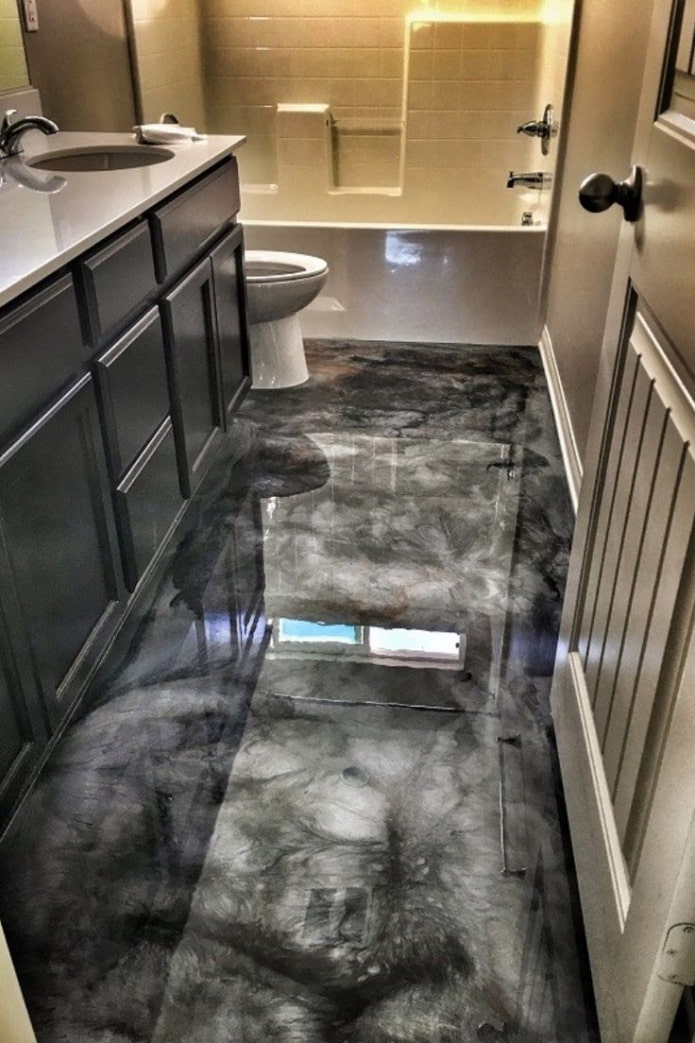

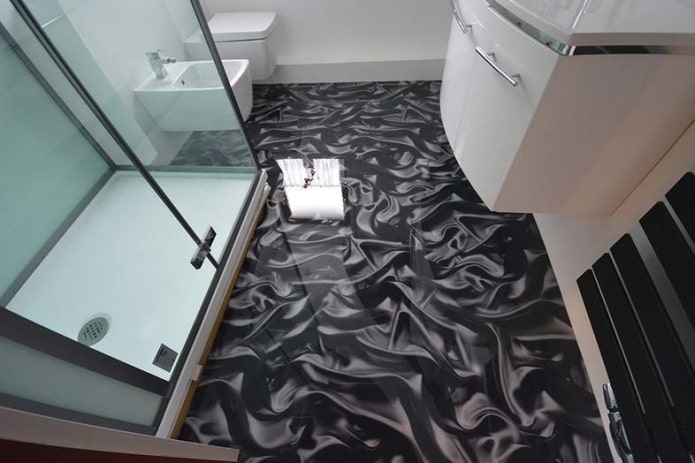
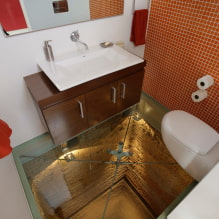
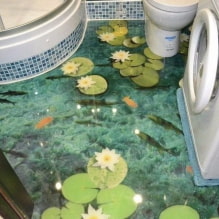
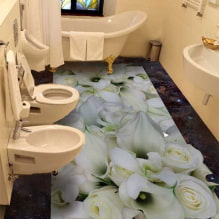
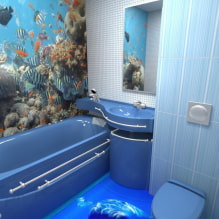
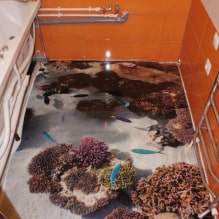
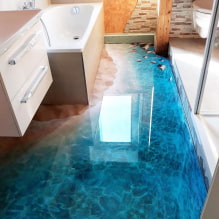
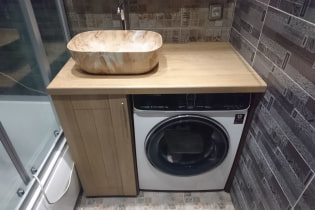 How to position the washing machine in a small bathroom?
How to position the washing machine in a small bathroom?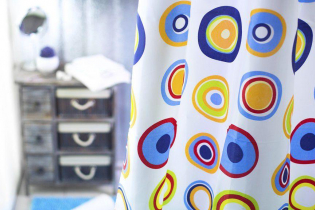 How to remove plaque from the bathroom curtain?
How to remove plaque from the bathroom curtain?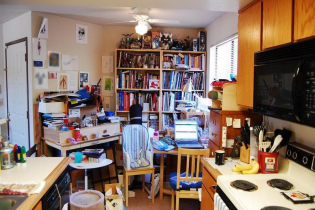 7 common mistakes in small apartment renovation that eat up all the space
7 common mistakes in small apartment renovation that eat up all the space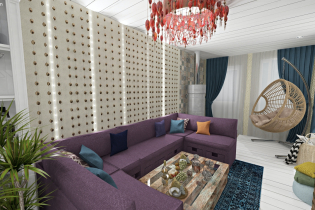 Apartment layout: how not to be mistaken?
Apartment layout: how not to be mistaken?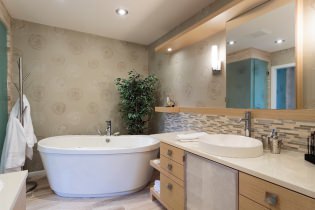 Wallpaper for the bathroom: pros and cons, types, design, 70 photos in the interior
Wallpaper for the bathroom: pros and cons, types, design, 70 photos in the interior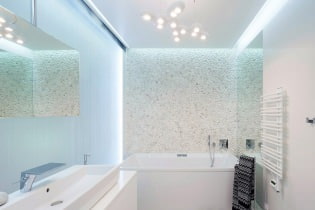 Modern bathroom interior: 60 best photos and design ideas
Modern bathroom interior: 60 best photos and design ideas